Torture test for outdoor finishes: The end
Mother Nature: 1, outdoor finishes: 0.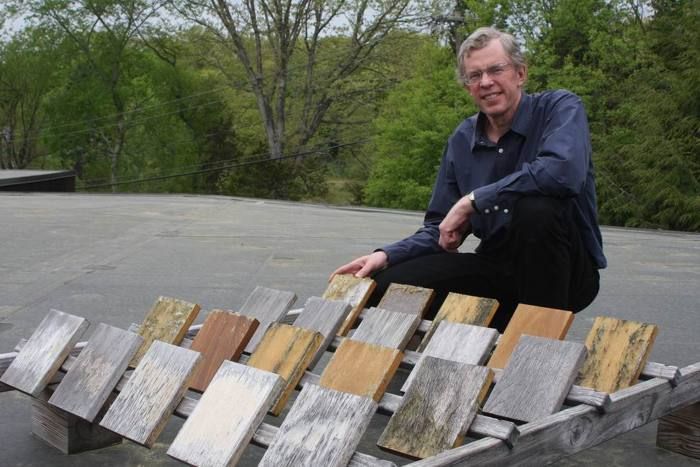
A sorry sight. In almost all cases, the finish on the exposed side of the sample boards was beyond repair, and often so was the wood.
In the June 2009 issue of Fine Woodworking magazine (#205), Tom Begnal wrote an article called “Torture Test for Outdoor Finishes” where he described how he prepared sample boards from five different types of wood (mahogany, pine, white oak, ipe and cedar) and finished them with five different kinds of clear, exterior finish. A set of boards were then sent to spend a year in the damp U.S. Northwest, another set baked in New Mexico, a third suffered in the heat and humidity of Louisiana, while the fourth set sat up on the roof of Fine Woodworking’s office.
The boards finished with Epifanes, a Dutch marine varnish, and those that were first treated with an epoxy sealer and then finished with Epifanes as shown by Sean Clarke in issue #178 “A Durable Exterior Finish” came through almost unscathed, a hardware store spar varnish had mixed results, while those boards finished with a water-based polyurethane and those finished with a penetrating oil finish did not survive their year-long test.
Out of curiousity, we put the Connecticut boards (excluding the boards with the penetrating finish) back on the roof and last week I went up to take a look at them. It was pretty sobering to see how poorly they had survived. Granted, they had baked on a black, asphalt roof and been angled towards the south, while this parst winter they were probably buried in snow for the better part of three months. Of the 20 boards only one, the mahogany board finished with epoxy and Epifanes, could be refinished without having to first strip the old finish. On all the others bare, gray wood was exposed, and in many cases the finish was nearly gone. What was amazing was the contrast with the side of the boards that faced downwards. Here, the two sets of boards finished with Epifanes had survived pretty well. Clearly, temperature and moisture play less of a roll in decaying a finish than the direct rays of the sun.
What did I learn? Well, if you want a film finish to survive outdoors, as soon as it begins to dull, sand the surface lightly and apply another coat. If the finish gets damaged, repair it immediately before moisture can penetrate the wood. Lastly, if the sun’s UV rays can do this to tough finishes and tougher woods, think what it does to your skin. Wear sunscreen!

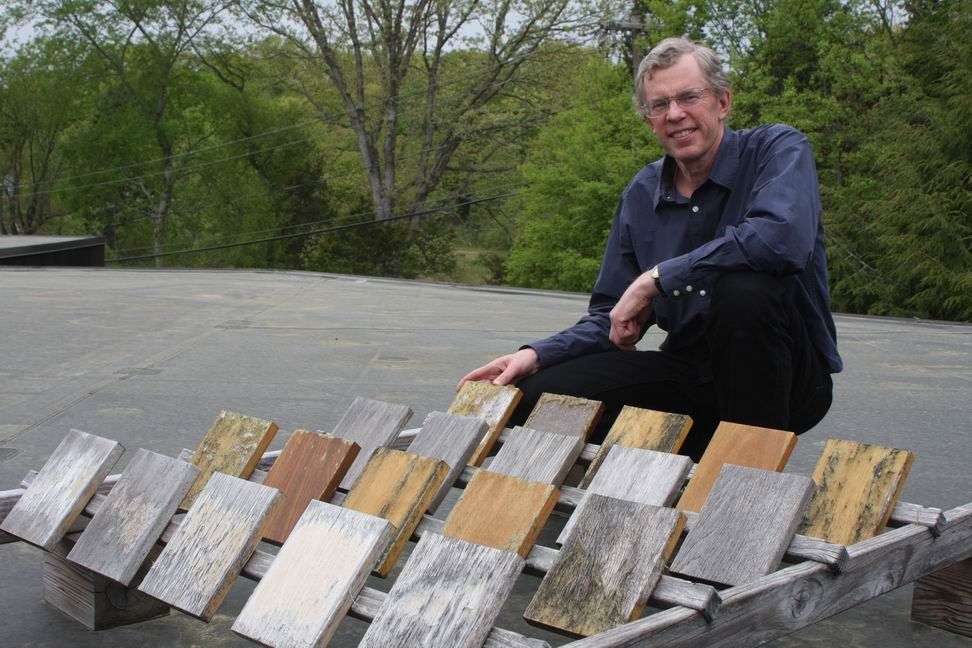
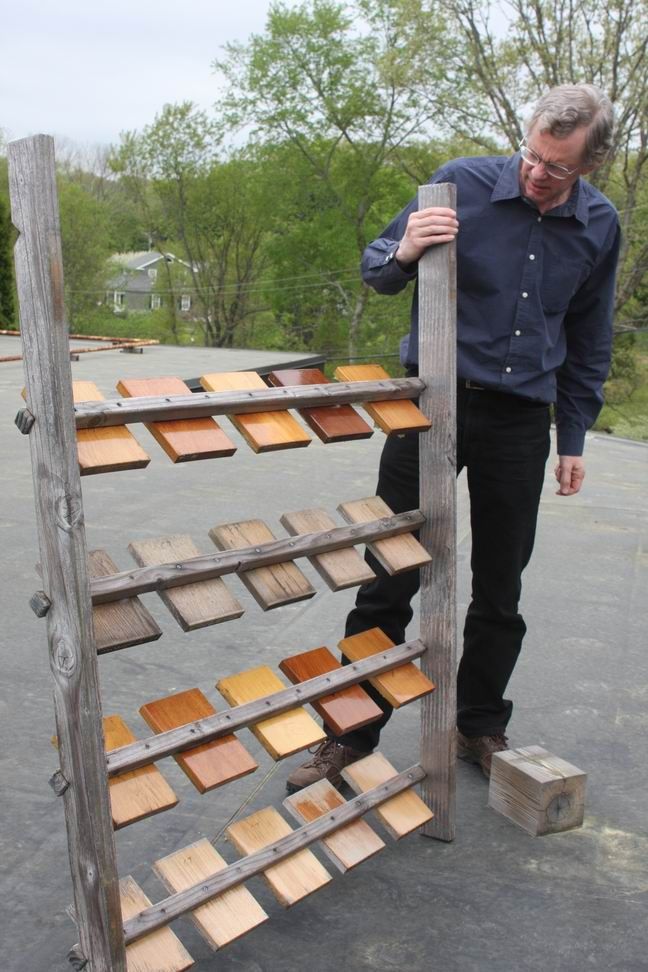



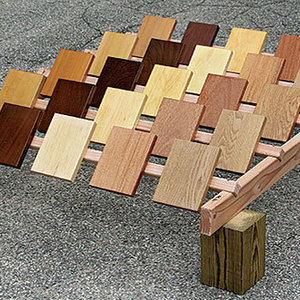
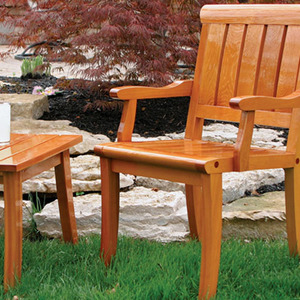











Comments
You know, Mark, that has been my experience with outdoor finishes as well. Especially here in my area where we go from super cold, snowy winters to really hot, humid summers. So when most people ask me what I recommend for an exterior wood finish, I say, "Buy a species that won't rot very fast and learn to like the colour gray". Seriously, I don't see why we even have to finish exterior wood, as long as we choose a rot-resistant species like cedar, white oak, etc.
While I know you can maintain an exterior finish with constant maintenance, I always think, "Who really has the time to maintain or recoat all outdoor projects every single year?" Between a deck, gazebo, outdoor benches or other furniture, etc., you'd have to retire from your full time job in order to keep up with it all!
The only piece of outdoor woodwork I maintain annually is my business sign. And it does require recoating once a year. Sometimes I push it two years and regret it because there is more work to be done.
Every year I learn to appreciate the colour gray just a little more (since my beard is turning that colour anyway).
Cheers,
Hendrik Varju
Passion for Wood
Mark, I have nearly given up in a long search for an acceptable wood treatment. Your article is an extremely valuable test but you have done a serious disservice by truncating the reporting of your results! Why on earth would you included photos of only two of the wood types, especially when you report that some of the species darkened while others lightened? Readers like me, who are using the species you did NOT provide photos of, want to see those results! Telling us about them in summary fashion makes no sense after you have gone to the trouble of staging this test all over the country. (The explanation that you were saving space makes no sense - digital space is cheap.)
Is there somewhere I can see the rest of the photos, both from the original test and The End? I would especially like to see the results on both the fronts and backs from The End. There is no labeling on the small photos you did include, so I can't tell which species is which.
Log in or create an account to post a comment.
Sign up Log in